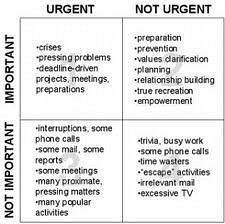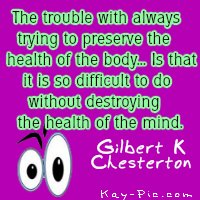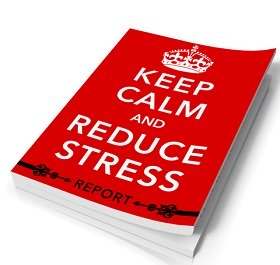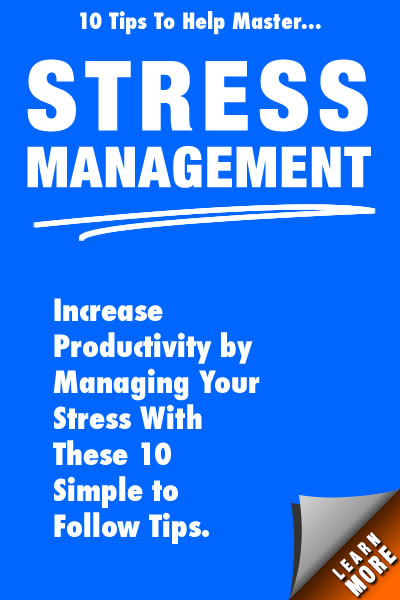Handling Time Management
and Stress without Crisis Mode
Time management and stress that accompanies it can be one of the most challenging skill sets to learn. It seems we are always trying to handle too many demands with too little time.
Here is a tool from Stephen Covey to help you learn how to use your time more efficiently and effectively. Covey's Time Management Matrix focuses on two key dimensions: (1) time urgency and (2) importance of the activities we handle. Time management and stress can become less of a challenge depending on how we spend our hours.
In the graph below, the more urgent tasks are located on the left-hand side of the grid. The more important tasks are located to the top of the grid. The grid categorizes our activities into four quadrants. We spend time in one of these four ways.

Quadrant 1 lists tasks that are urgent and important. This is the Quadrant for emergencies, crises and deadlines. We need to spend time here, but many of important activities end up in this urgent quadrant because of procrastination, or because we did not spend enough time planning.
Quadrant 2 lists things that are important but NOT urgent. This is the Quality Quadrant. Here we handle quality time with our family, relationship building, self improvement and quality long range planning. These things are very important, but not pressing this minute.
Quadrant 3 includes things that are NOT important but are urgent. This is a Quadrant of Deception. Examples include interruptions, phone calls, and things that take your attention right now, but are just distractions. There is the illusion of importance as we meet other people’s priorities, thinking we are in Quadrant 1.
Quadrant 4 lists things that are NOT important OR urgent. This is the Quadrant of Time Wasters. Examples include watching TV, busy work, some phone calls, and things that you may enjoy doing but aren’t important. It is o.k. to spend time here for relaxation but if over used it can be a nightmare for time management and stress can escalate when you find yourself back floundering in Quadrant 1.
To better comprehend how time management and stress issues become detrimental in your daily life, take a look at your last week’s schedule. Place each of your activities in one of these quadrants. Where did you spend the majority of your time?
Now take your list of activities for the coming day and place each activity in one of those four quadrant boxes. By focusing our efforts DAILY on separating our tasks and keeping each in its quadrant, our time management and stress levels will improve. Having the discipline to handle tasks while they are important but not yet urgent will produce higher quality work, and your time management and stress levels will improve.
To have a better handle on your time management and stress levels, it becomes necessary to move away from handling everything as a matter of urgency and begin to address activities when they are important but not a crisis. This means better planning, and a better focus on what is important in your life. The goal is to keep your work in Quadrant 2 as much as possible, keeping up with things that are not urgent but are important.
Practice setting SMART Goals for upcoming projects. Create specific actions necessary to achieve these goals, as well as assigning specific target dates for completion. Spending time in Quadrant 2 is a habit that needs to be formed so that you are not reacting to the daily happening of your life and losing focus on the bigger picture.
Moving to Quadrant 2.
Here is an exercise to help you switch from allowing your time management to be dictated by urgency.
- Write down all of the Quadrants 1 and 3 activities you handle on a daily basis.
- For each of these activities consider, “What can I do to prevent this activity from reoccurring or from it having such urgency?”
- Write corresponding answers that identify Quadrant 2 activities you should be doing and you can then schedule time and ways to implement.
- For each Quadrant 2 activity scheduled, treat it like an appointment.
Time management and stress do not have to be your enemy and do not have to have detrimental effects on your emotional and physical well-being. Changing from focusing on the urgent to focusing on the important takes time and practice.
How to Find an Extra Hour in Each Day
POPULAR PAGE
Join Calm Starts Here, and receive FREE How to Get a Good Night's Rest and Stop Worrying.
Share this Page on SheToldMe.com
Become a FaceBook Fan












